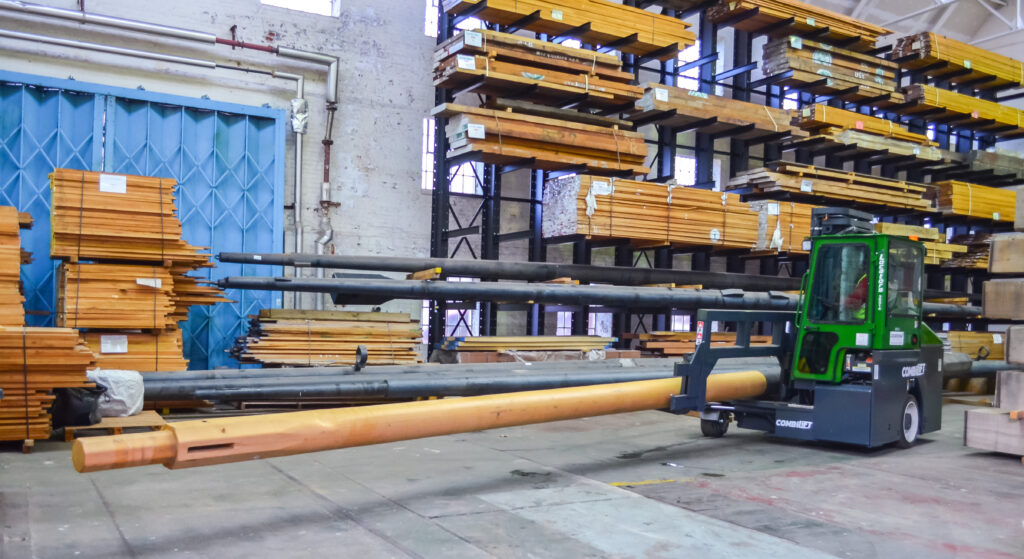4-way Forklift for HMS Victory Conservation Project
5th June 2024

A combination of over 250 years of naval heritage and 25 years of forklift technology in the form of a Combilift multidirectional truck is ensuring the smooth running of the HMS Victory Conservation Project by The National Museum of the Royal Navy at the Portsmouth Historic Dockyard.
After over 250 years of service in the Royal Navy, HMS Victory is undergoing the most comprehensive conservation project in her recent history to ensure that she is fit to fulfil her duties as flagship of the First Sea Lord, a unique historical asset as an exemplar of the First-Rate warships from the Age of Sail and a world-class visitor attraction for decades to come. The work presents a once in a lifetime opportunity for visitors to see the National Museum’s skilled workforce undertaking the tasks involved in replacing decayed planking and frames, and stabilising the historical timbers as the ship remains open to the public throughout the project.
The vast amount of required material is stored in what were the old ropeworks, and includes 6.5 – 7m long packs of timber for making customised laminated slabs, steel mast sections that can be as long as 23m, as well as pallets of miscellaneous items such as ropes. Lead Rigger Stuart Sheldon and Rigger Ben Gillett knew that it was going to take a pretty special piece of equipment to handle these extreme loads around some very confined spaces.
“We are now at a stage where we are re-organising various storage areas within our Grade II* listed building. As we began planning how to reorganise the existing racking and install new, we realised that we could only manoeuvre safely and efficiently using the multidirectional capability of the Combilift, which was recommended by our handling consultants Locators. We therefore centred the racking re-design around the specifications of the truck and are now moving almost 5t of materials every day,” said Sheldon. “As we are handling very valuable items such as historical artefacts which are often large and fragile, we need to be vigilant to avoid any damage. The truck’s design – resting loads on the low platform as well as visibility from the cab – keeps our loads safe.”

Locators provided an interim truck and training on it whilst the new unit was in production at Combilift’s factory. Customised specifications included a quad mast with a closed height of 2835mm to enable the truck to (just) pass under a low internal doorway and a lift height of 7600mm to access the top level of racking. A 6m spreader bar is also on hand, which is quick and easy to install when required, and ensures utmost stability when handling the very long steel replica mast sections which weigh up to 3.5t.
One of the biggest challenges is moving masts from the storage area to an inspection and maintenance workshop which involves travelling in and out of narrow doorways, along a road and around parked vehicles. Sheldon and Gillett have this down to a fine art now, but again it is a manoeuvre that would be nigh on impossible with any other type of forklift. Sheldon sums up: “Compared to the original shipbuilders we have been fortunate to benefit from modern technology and the Combilift has been absolutely integral to the project, and will continue to be so for its duration.”
read more

